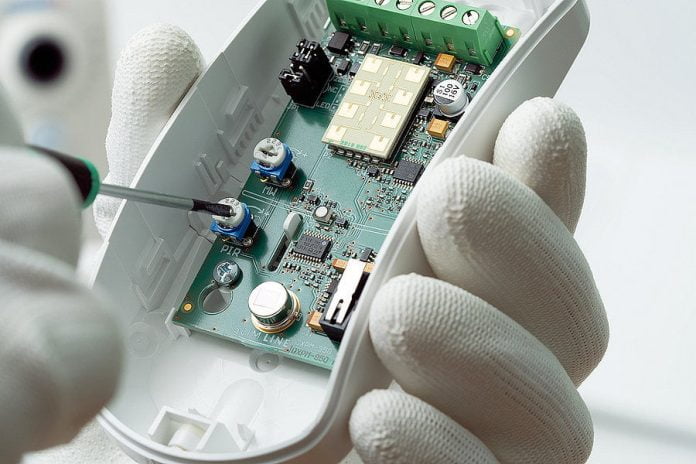Adjusting PIR Pulse Count
♦ Adjusting PIR Pulse Count is a process that’s undertaken to reduce the tendency of a sensor to false alarm in a challenging environment by delaying the sensor’s reaction to what may not be an intrusion event.
A PIR discerns motion by measuring the infrared emission levels of objects crossing detection zones. If the infrared levels change quickly, as when a person moves across the detection pattern, the PIR will recognize the change as an intrusion. However, some moving objects will not be human intrusion and may be objects blowing in the wind.
A selectable pulse count circuit controls the PIR’s triggering of NO/NC alarm events. As a person moves across the detection pattern, the PIR registers a pulse as each zone of the detection pattern is crossed.
A sensor with pulse count counts pulses as the event unfolds – the more pulses that must be counted, the higher the IRE levels required to activate the circuit – settings of 3 are less sensitive than lower settings.
When the selected number of pulses occur in a set time, the PIR will activate an alarm signal – that might be 3 pulses over 10 seconds, depending on the sensor configuration and the settings applied by the technician.
A strength of pulse counting is that it allows a sensor to be tweaked in a challenging environment without reducing pyroelectric sensitivity or applying zone masking – it’s ideal for tuning out moving inanimate objects like plants or curtains.
There’s an argument against pulse count – setting pulse count to anything that is not default can be said to reduce a sensor’s sensitivity and the installer is better to adjust the angle of view, or change the environment to maintain optimum catch performance from sensors.
For this reason, in high security applications, we’d resist pulse count settings, and if we had to use this feature, we’d use the setting that counted the fewest pulses before signalling an alarm event.
#SEN #SENnews #security #electronics







